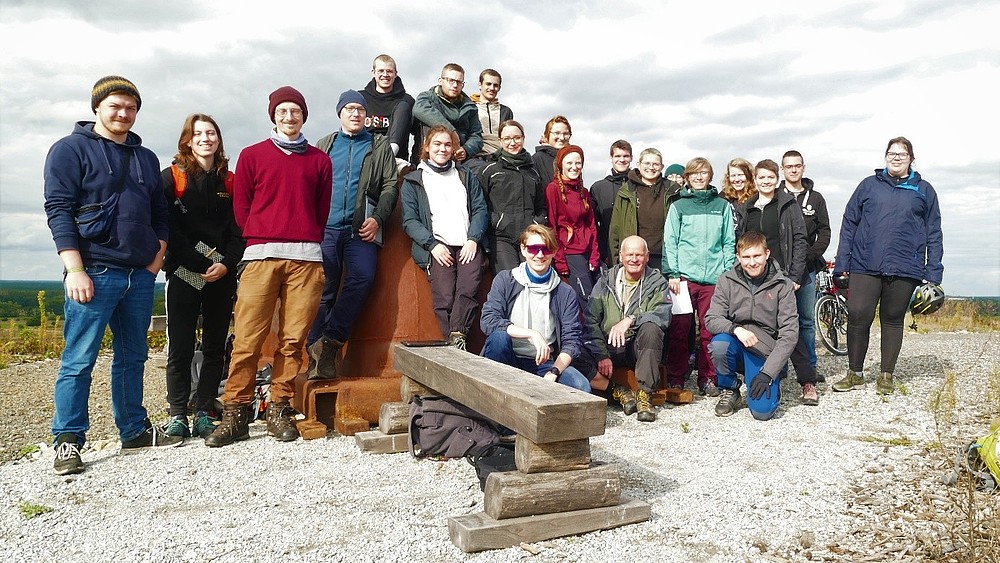The fifth semester of the Ecology and Environmental Protection course went on an excursion.

Every year at the beginning of the fifth semester, the Ecology and Environmental Protection course in Landscape Use and Nature Conservation undertakes an excursion as part of the Landscape Planning l module together with Prof. Dr. Schulz and this year with Dr. rer. nat. Arnstadt.
On the bus trip to the Spreewald, we were able to get to know the history, technology and landscape changes of lignite mining in Knappenrode, Lichterfelde, Lauchhammer and the post-mining landscape.
We then used our bikes for many of the routes and moved through the countryside away from the main traffic. We also got to know some of the weak points of our bikes during minor repairs. Paddling in the Spreewald is obligatory, close to nature and educational. We saw the core zone (the high forest) and the museum village of Lehde.
On Tuesday, we were given a guided tour of the Spreewald biosphere reserve, where we learned about the concept of a Hutewald (forest pasture) with Galloway cattle and met a former ecology student from the Zittau/Görlitz University of Applied Sciences, who is now responsible for contract nature conservation on meadows.
The second half of the excursion took us to Weißwasser. On the way, we were able to get to know the renaturalized division of the Spree: there it can meander, ripple and show a diverse water pattern again - not only for people.
On Thursday, we were able to drive into the Welzow-Süd open-cast mine. Huge spoil heaps and a massive coal seam are moved by gigantic technology. Standing next to it, 60-90 m deep, the full extent of an open-cast mine becomes even more tangible. A piece of coal as a souvenir was also on offer. Afterwards, forester Rösler from LEAG led us across the recultivated areas of the open-cast mine past species-rich tree and shrub communities. But we also heard about the problems that need to be solved during recultivation. Large-scale, uniform land uses such as agricultural areas, forests and the newly created lakes cannot compensate for some species losses.
On Friday, we explored the Muskauer Fürst Pückler Park and the Muskauer Faltenbogen Geopark on a 60 km circular route. The picturesque park with its ornate, playful palace and diverse outbuildings provides an impressive insight into the art of garden and landscape design. The old Babina mine with its mining relics, colorful lakes and large observation tower impressively demonstrates the connection between the landscape and the use of lignite. Traces of the glass industry and the outcrop of a lignite layer ("Jeser/ Gieser") complement the landscape impressions.
On the way back to Zittau by train, we were warmly welcomed at the Schloss Niederspree nature conservation center and learned about the joys and struggles of the nature conservation station's work. An exchange of the remaining supplies, a donation to the station and a guided tour of the pond area made for a good mood and a well-rounded degree of the excursion. The closure of the Hagenwerder-Zittau line didn't bother most of us after the week's training.
All in all, it was an instructive but also challenging study trip/excursion. The many impressions of the landscape, lectures and guided tours, as well as the encounters with friendly and knowledgeable people, more than compensated for the strenuous days and sometimes bad weather. The excursion brought us closer together as a shared experience.
We would like to thank everyone involved for their organization and personal commitment!
Text: Karl Rutz, Anna Pollmann and Prof. Reiner Schulz